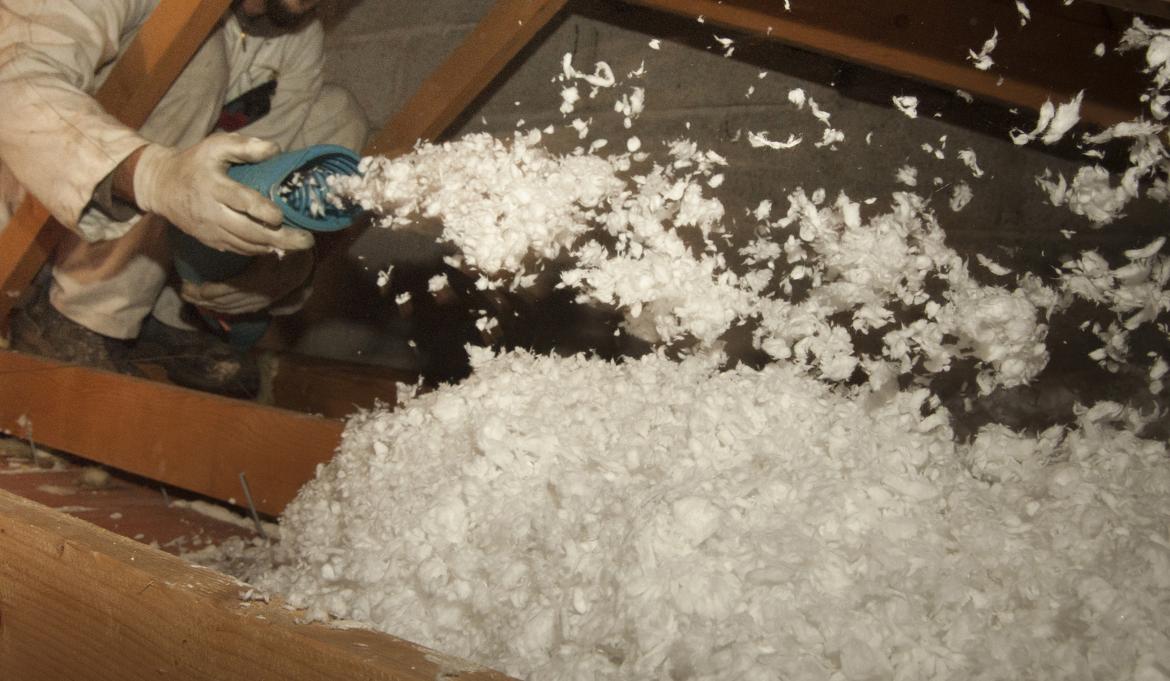What Are The Different Types of Insulation?

Loose-fill or blown-in insulation is used to cut down on energy costs.
Once made from cellulose, sawdust, newspaper, cotton, and straw, today’s insulating products come in all shapes, forms, and sizes. Made from chemical-free and recyclable products as well as moisture and air resistant materials, these new and improved insulators offer higher R-Value ratings, meaning they are more resistant to conductive heat. Learn about the different types of insulation and which locations in your house they are most effective.
Batt & Poly
While batt & poly may sound like the name of a new cartoon series, it actually refers to fiberglass batts, which are made from long, glass fibers bonded with a formaldehyde-free resin. A polyethylene layer is placed on the warm side of the insulation to prevent humid and cold air from creating condensation.
Batt & poly is typically used inside of walls, floors, and ceilings, as it is built to fit in between joists, studs, and rafters. It comes in a variety of thicknesses with R-Values of up to 50, which makes it ideal for colder temperatures. In addition, the fiberglass batts are made from 50 percent recycled materials and are fire-resistant.
Spray Foam
An alternative to fiberglass is polyurethane spray foam (SPF), which is used as both an insulator and an air barrier. Spray foam insulators come in liquid form and then expand, enabling the spray to fill in hard-to-reach places, such as cracks and cavities, eliminating the need for caulking. Closed-cell spray foam provides high R-Value and increased protection from moisture and air and is often used for attics, basements, crawlspaces, angled ceilings, and media rooms for soundproofing.
Loose-fill Insulation
Popular in colder climates, loose-fill, also known as blown-in insulation, is a type of fiberglass insulation that is blown in or sprayed rather than laid out as with fiberglass batts. It has a high R-Value rating of up to 70, which makes it a good choice to receive either BC Hydro or Fortis BC rebates for attic insulation upgrades.
Thermal Acoustic Insulation
Used to minimize temperature fluctuations and to minimized energy, thermal acoustic spray-on insulation is a fiberglass product used in commercial, industrial and multi-unit residential applications, where noise control is required, Thermal acoustic insulation can be used as soundproofing on floors, doors, and ceilings, and can be sprayed directly on metal, wood, and fire-resistant surfaces, lessening the need for finishing products.
Read How Insulation Saves You Money and Keeps You Comfortable.
Okanagan Insulation Services provides attic upgrades, crawl space, and wall insulation, as well as insulation removal for both commercial and residential new construction, renovations, and more. Contact us to request a free estimate on your next project.